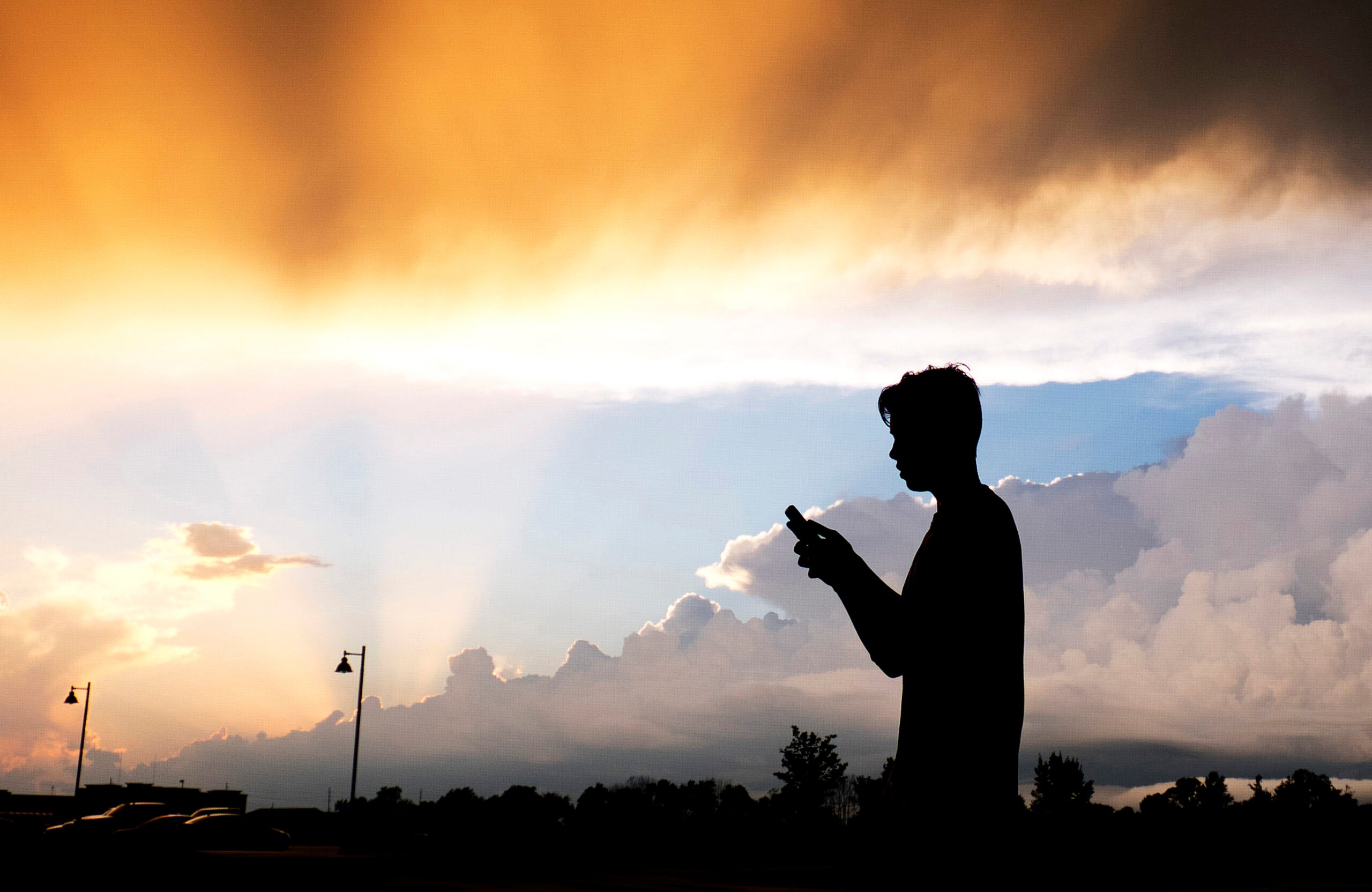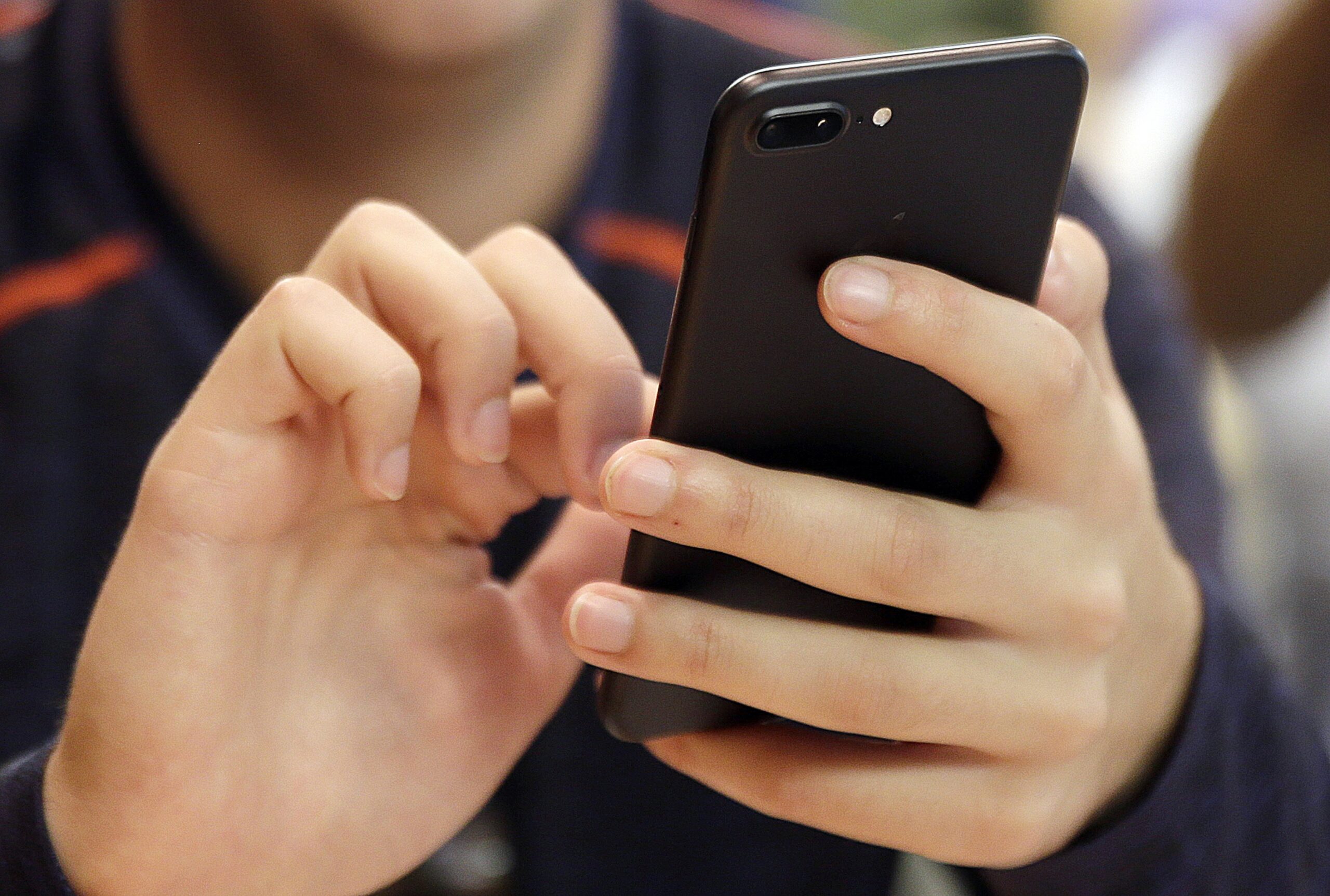Janice Peng got her first smartphone when she was in seventh grade. Like a majority of her friends, she’s been online for most of her teen years.
Now a senior at Middleton High School, she said her and her friends’ relationships with technology isn’t exactly healthy.
“I feel like it’s definitely a range … Some of them are really, really addicted, and they show those at-risk behaviors,” Janice, 17, said. “On the other hand, some of my friends are a lot better at managing their content and phone use.”
News with a little more humanity
WPR’s “Wisconsin Today” newsletter keeps you connected to the state you love without feeling overwhelmed. No paywall. No agenda. No corporate filter.
Parents have been mystified by teens’ relationship to digital media since smartphones and the internet became ubiquitous parts of life. Questions of how to limit screen time, minimize the mental health impacts of social media, and rely less on technology continuously make the rounds on parenting websites and in academic research. But a new study from the University of Wisconsin-Madison gives a hint as to where parents should be looking: inward.
The study looked at the digital media use and family dynamics of nearly 4,000 teen and parent pairs. It found a majority of teens — 63 percent — had a “healthy relationship with technology” so long as they also fell into the “family engaged group.”
Dr. Megan Moreno, a professor of pediatrics at UW-Madison’s School of Medicine and Public Health and study lead, said their findings show just how important parents are when it comes to teens and technology.
“Parents serve as such role models, and I think that when kids are young, the role-modeling includes a lot of instruction and talking; and I think when teens are older, parents teach more through their own behavior than through their own words,” she said.
In other words, parents who find themselves lost in their own devices may see their teens mirroring that behavior, even if parents try to set boundaries.
“My hope is our study really gets at what a powerful, positive influence parents can be in providing support and co-viewing, talking about content … And just that parents realize what an important role they play in role-modeling their own technology use,” Moreno, who also heads the Social Media and Adolescent Health Research Team, said.
Of the teens surveyed, 37 percent were categorized as “at risk,” meaning their parents spent a lot of time on social media, they only had rules relating to screen time, or they had no rules at all.
Like a lot of academic research on technology use and teen health, Moreno’s study found “at risk” teens had higher rates of depression, anxiety, unhealthy body image and fear of missing out.
Those teens also almost exclusively had their own devices — including smartphones, laptops, tablets and gaming systems.
“Smartphones are something that as a society, we generally own on our own. But there’s a whole lot of other devices that probably an individual adolescent doesn’t necessarily need to own on their own,” Moreno said.
Based on the study’s findings, Moreno points to three key areas parents should be looking at to improve their teens’ relationship to technology:
- Consider family-owned devices, rather than individually owned.
- Create and maintain household rules centered on content, not screen time.
- Be aware, as parents, of their own technology and social media use.
And Janice suggests parents set boundaries early, as soon as their kids start interacting with digital technology.
She said her parents have some rules in place about screen time — not during dinner or in the car — but beyond that she “just has freedom.” She said it’s probably too late to implement new rules relating to her technology habits.
“I don’t know if it would be feasible to implement that sort of monitoring, after it has already gone several years without monitoring,” Janice said. “I think it has to start right away, so then it becomes the norm.”
Janice also encourages parents to set rules with their kids, not just for their kids.
“I think that parents should keep in mind that it’ll be a lot more effective if they treat it as working with their kids to regulate social media use instead of just coming down from above,” she said.
Wisconsin Public Radio, © Copyright 2025, Board of Regents of the University of Wisconsin System and Wisconsin Educational Communications Board.






